History of Pavilion Theatre
Pavilion Theatre has been a significant part of the Dún Laoghaire landscape for over a century, first opening its doors in 1903. Those years have seen very different buildings, very different Pavilions, all with their own histories, stories, secrets. In September 20216, we unveiled The Pavilion History Project on the walls of the theatre, a permanent exhibition that combines history and memory, and which was researched, written and designed by Kate Heffernan. Below is an extract from the project. We invite you to visit us at Pavilion during our opening hours to enjoy the full exhibition.
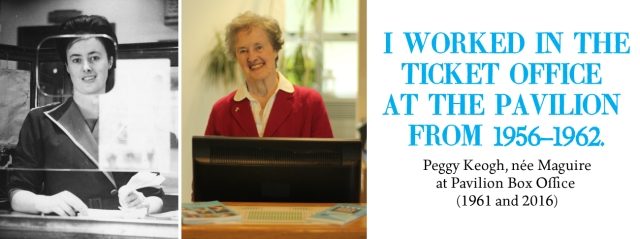
The idea for a theatre and gardens in Kingstown was planted as a seed in 1870. The desire was to develop a graceful and tranquil location for Edwardian ladies and gentlemen to take their leisure.
The Pavilion & Gardens Kingstown Ltd. was officially opened on 22 June 1903. All glass and wood, this oversized conservatory measured 150–feet in length. The flat roof was intended to replicate deck promenades and the top deck was 30–feet above ground level. The roof gave a full panorama of the gardens and a continuous view from the mountains to the sea.
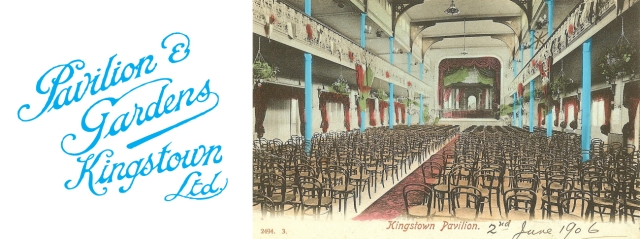
The stage of the lavishly decorated central concert hall was 83 feet wide and 24 feet high, and the scenery was designed and painted by Mr. Jackson of The Gaiety Theatre, with electric light provided by the Royal Marine Hotel. The supporting columns of the gallery were painted peacock blue with gold relief, and decorated with folds and drapes and fresh flowers. Throughout the building there were promenades, ladies’ and gentlemen’s reading rooms, a smoking room, a roof top garden, tea rooms and a shooting gallery.
Laid out across 4-acres by leading landscape designer William Sheppard (who also designed Herbert Park, St. Stephen’s Green and the Phoenix Park Zoo), the gardens were filled with flowering shrubs and rock gardens, a band stand, tennis courts and a waterfall. On the corner of Marine Road and Queen’s Road, two ticket booths sat either side of the wrought-iron entrance. Horse-drawn cabmen queued for customers along both avenues, and cabmen shelters from this time are still situated along Queen’s Road.
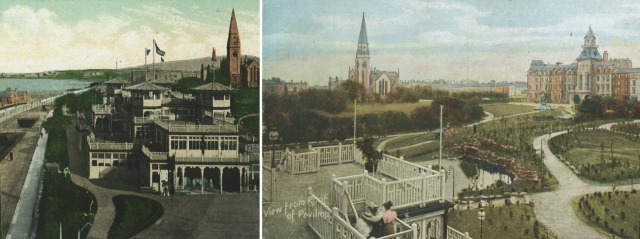
Early events included a 1904 Viennese evening of music and fireworks in which roughly 4,000 were in attendance, and a special performance from young tenor John McCormack in 1908. By 1911 the Pavilion had made its mark on the population of Kingstown, and with the inclusion of visiting performers from the United Kingdom and mainland Europe it quickly became one of the most popular entertainment centres in the country.
In the second decade of the twentieth century, the Pavilion began its long love affair with cinema, which continues to this day.
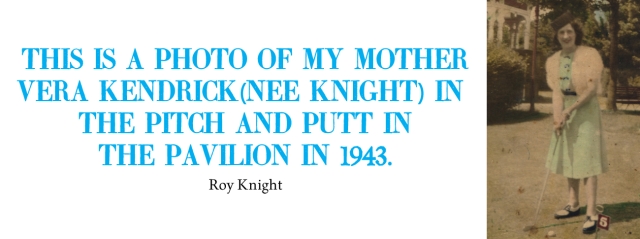
On the afternoon of November 13th 1915, The Pavilion was gripped by fire. Kingstown, Dublin Corporation and Pembroke Fire Brigades rushed to the scene, pumping water vigorously from the harbour. By 5pm, despite the fireproof paintwork applied to the woodwork throughout, and despite the best and valiant efforts of the fighters, the interior was completely destroyed. The Pavilion that remained was little but a smoky skeleton.
With Ireland moving through rebellion and war, the refurbishment and rebuild was prolonged. In 1920, while the War of Independence consumed the country, the Urban Council gave permission to the Pavilion Gardens Ltd. to screen Sunday cinema performances during curfew restrictions from 3pm to 7pm. The Pavilion Picture House established itself as a regular cinema by the mid 1920s, continuous performances taking place from 3pm to 10.15pm daily.
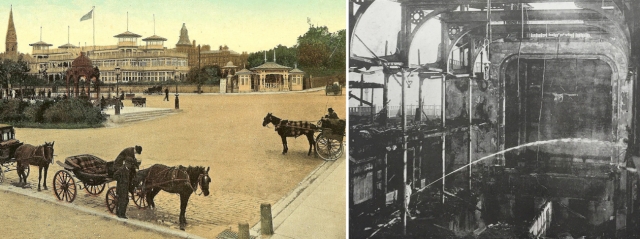
By the early 1930s, cinema had grown massively in popularity across Ireland and the world. At the same time, the popularity of the live shows had begun to wane, and in 1935 it was announced that a temporary cinema would be built on the site. As Europe moved to war again in 1939, this 850-seat cinema building was made permanent, a concrete structure replacing the elegant pavilion timbers. Amid the rise of dancehall culture, the main hall of the old pavilion which sat behind the cinema was transformed into a modern dance venue.
In November 1940, in the middle of the night after a final screening of ‘David Copperfield’, the Pavilion was gripped by fire for a second time. The Dún Laoghaire and Sandycove Fire Brigades battled in vain to control the inferno. The front façade and four walls were all that remained. The Pavilion had been reduced to its bare bones once again.

Quickly rebuilt, The Pavilion Cinema reopened on April 12th 1941 with a screening of the western ‘Lucky Cisco Kid’. The cinema drew huge crowds and dedicated audiences through the 40s and early 50s, the ‘House Full’ sign a common sight in the ticket booth. Patrons rushed to Marine Road on Sunday afternoons, a queue snaking along the promenade, with a black market in cinema tickets operating for popular films.
The rise of television through the 1960s marked the beginning of the end of the ‘House Full’ cinema days on Marine Road for another 50 years. In 1974, the last film to be shown at The Pavilion was ‘No Sex Please We’re British’.
For a decade, the building opened occasionally for live shows, theatre and films. In a programme broadcast nationally by RTÉ as ‘Pavilion Folk’, acts such as De Dannan and The Dubliners performed on the old stage in 1981. The Dublin Ballet Company run by Louis O’Sullivan was based in the building for a period of time, and Joe Dowling, then director of Irish Theatre Company, used the Pavilion as a launching venue.
Without the resources needed to refurbish the building in line with the Fire Acts of 1981 and 1982 that came in the wake of the Stardust tragedy, the Pavilion again closed its doors in 1984. The site became a car park for the next decade and a half.
Opening its doors in 2001, nearly 100 years after the opening of the very first Pavilion, Pavilion Theatre occupies the very same site. In a contemporary architectural version of that promenade design, the theatre sits on the upper deck, while below sit the promenade, shops and restaurants.
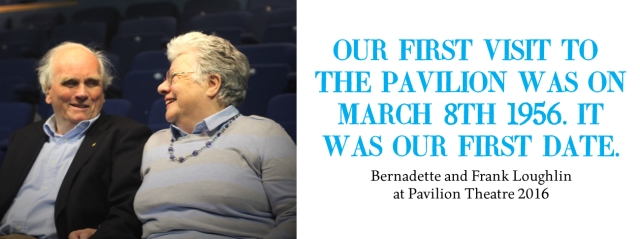
Standing in the corner of the upper deck, with the sea to your left, the theatre to your right, and the new DLR Lexicon beyond, the ‘Pavilion Panorama’ has changed dramatically. Nothing survives of the physical form of the original Pavilion. And yet, as Dún Laoghaire continues to shift and change with the ebb and flow of the harbour waters, Pavilion Theatre strives to maintain the high standards of entertainment that the Pavilion & Gardens, The Pavilion Picture House and The Pavilion Cinema provided the people of Dún Laoghaire and Dublin for over 100 years.
The spirit of Pavilion lives on.
The Pavilion History Project was made possible by Pavilion’s Patron Donation Fund. With thanks to our audiences for sharing their memories and a special thanks to the Dún Laoghaire Borough Historical Society.
See more of Kate Heffernan’s work at www.kateheffernan.ie



